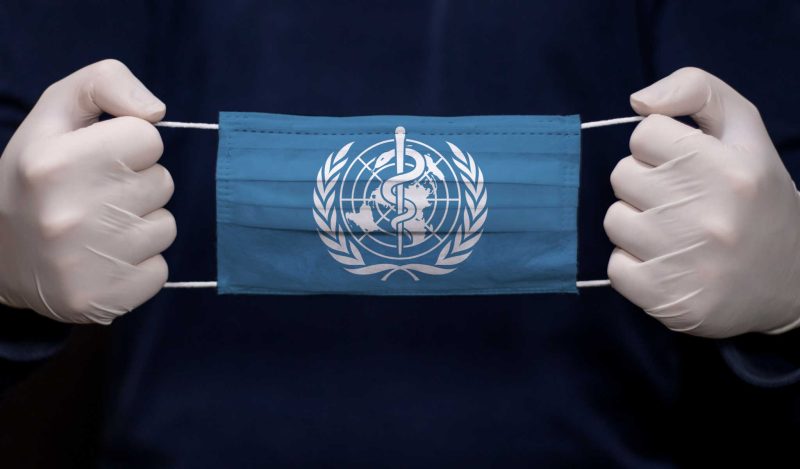The calendar of the late medieval peasant included around 115 Holy Days. For starters there were 52 Sundays, 12 Days of Christmas, 7 of Easter, 7 of Whitsun, then a string of days for major saints, plus one for the saint whose name you bore and another for the patron saint of your parish church.
Some, like the further 40 days of Lent, were for fasting and abstinence, others for feasting. Hopefully the local monastery, or lord, would lay on a spread. If you consider this last point rose-tinted, note that Martin Luther condemned Holy Days precisely because “they are abused by drinking, gambling, loafing, and all manner of sin,[meaning] we anger God more on Holy Days than we do on other days.”
Nowadays, the secular calendar of public health fills an even larger fraction of the year and includes no fun or feasts, obviating Luther’s objection. There are four months, two coinciding, of forswearing toxins and signalling virtue: Stoptober, Movember, Dry January and Veganuary. On a higher plane, the WHO has 25 days or weeks devoted to solidarity against threats such as Lead Poisoning, AIDS, TB, Drowning, and ‘Neglected Tropical Diseases.’ The UN adds more: for example World Toilet Day, (19 Nov).
The WHO’s World Antibiotic Awareness Week (WAAW) begins a day earlier on the 18th and continues till Thursday the 24th. WAAW used to be a single day (18 Nov), but now it’s a week, which underscores the importance the WHO attaches.
It’s of some professional interest because I used to head the UK’s national reference lab for antibiotic resistance and had to engage with it. And, yes, there is a genuine problem with resistance, as well as some exaggerated hyperbole. Succinctly, antibiotics kill susceptible bacteria, leaving resistant ones to survive and infect the next patient. Over time this Darwinian selection means that drugs can become useless. We successively ‘lost’ sulfonamides, penicillin, tetracycline and ciprofloxacin against gonorrhoea, for example. Otherwise-harmless gut and environmental bacteria that opportunistically infect ICU patients are especially adept at acquiring resistance, even to the newest drugs.
So, I’m in favour of prudent, better-targeted, antibiotic use, to slow this evolution.
Which is why yesterday’s news – in the London Daily Mail , then confirmed from the FDA website – brought a groan. WAAW begins with a shortage of amoxicillin – one of the world’s most widely-used antibiotics. The driver is a big increase in respiratory syncytial virus (RSV) among US children and, more surprisingly, adults. RSV rates among seniors are 10-fold higher than normal for the season. This follows similar RSV surges in Japan and New Zealand in 2021. On top of which there’s an explosion of influenza in the US, with rates higher than for the corresponding week of every year in the past decade.
These RSV and flu patients roll into emergency rooms and are given amoxicillin ‘just in case’ their viral infection leads to a bacterial one. Whether they should be given an antibiotic is doubtful. Most wouldn’t develop bacterial superinfection. The amoxicillin will do nothing to cure the viral infection and may select resistance among their gut bacteria, which might seed a subsequent harder-to-treat urinary infection.
Nonetheless, the prescribing is understandable. The clinician has a queue of patients. Each is happier with ‘treatment.’ Around two or three per hundred among the elderly would develop bacterial pneumonia. Maybe one per hundred would land in hospital, costing far more than 100 courses of amoxicillin. And he or she might sue the physician who denied the antibiotic.
So, rather than condemning questionable amoxicillin prescribing, let’s put the blame where it is due. On two and a half years’ insanity, which precipitated this mess. On the failure of the medico-scientific establishment to see beyond their one obsession of controlling COVID or even achieving Zero-COVID. On ignoring every predictable piece of collateral damage, including impacts on other diseases prioritised with their own ‘Holy Days.’
Above all, we should start by acknowledging that we live in messy equilibria with respiratory viruses, not perfect immunity. We are infected and develop short-duration protection. Once this fades we are prone to be reinfected, perhaps by a viral variant that partially escapes our residual defences. The cycle then repeats. Flu vaccines help a bit but haven’t eradicated influenza.
In infancy each virus is new, so we spend our winters as snotty-nosed brats, with one cold after another. Equilibria establish as we grow to adolescence, though. Afterwards we catch only occasional colds. Many are asymptomatic, as reported for rhinoviruses in university students and influenza in school-aged children. These reboot immunity without us knowing we’re infected. SARS-CoV-2 was a problem because we adults had to begin to build immunity de novo, sometimes at an advanced age. And, as with learning a language, it’s easier at 5 than 75.
Lockdowns, masks and social distancing failed to stop circulation of SARS-CoV-2. What they did achieve was to disrupt our equilibria with other respiratory viruses. Flu and RSV all but ‘disappeared’ in 2020 and early 2021, leaving our immunity to decay. Now they are roaring back, finding victims aplenty, even in age cohorts who normally evade symptomatic RSV. This, in turn, drives antibiotic use, warranted or not, and deepens the amoxicillin shortage.
Just in time to mock WAAW.
WAAW isn’t the only WHO Holy Day (or Week, rather) thus defiled. Take TB Day (24 March). Distribution of antibiotics for tuberculosis was hit by lockdowns in South and Southeast Asia, raising the risk of treatment failures and resistance. Ditto for HIV/AIDS (1 Dec). Next, there’s Immunisation Week (24-30 April). Whatever benefits COVID vaccines have for the old and infirm, efforts to force them – with mandates and vaccine passports – onto the young and healthy, who then caught COVID anyway, has fed understandable distrust. This undermines uptake of other vaccines that are more unequivocally beneficial. Last, there’s World Mental Health Day (10 Oct). Lockdowns and masks weren’t good for anyone’s mental health, to say the least.
Of all organisations, the WHO, with its calendar of Holy Days as an aide memoire, should have recognised how so many aspects of health and well-being interlock, and how fighting an existential war with one pathogen would impact other priorities. It had a sane and proportionate respiratory pandemic plan in 2019.
This made no mention of general lockdowns, was sceptical of masks except for the symptomatic, and abjured border closures, contact tracing or quarantine of contacts. All this good sense, designed for influenza and applicable to other respiratory virus, was abandoned overnight in March 2020.
Now the consequences are coming back everywhere, even hitting priority targets identified by the WHO’s own High and Holy Days. Before it has any Pandemic Treaty, the WHO must be forced to reflect on this and to remember the first law of medicine: ‘Do no harm.’
Join the conversation:


Published under a Creative Commons Attribution 4.0 International License
For reprints, please set the canonical link back to the original Brownstone Institute Article and Author.









